Pulley Systems and Forces
VerifiedAdded on 2019/12/03
|17
|1830
|333
Report
AI Summary
The assignment discusses the concept of acceleration, forces, and pulley systems. The first part provides a calculation for the acceleration of an object when a force is applied to it, taking into account the angle of the rough plan and the magnitude of the force. The second part focuses on pulley systems, which are used to increase the load or reduce the effort required to lift a weight. Various types of pulley systems are discussed, including 1:1 redirect, 2:1, 3:1, 4:1, 5:1, and 6:1 systems, along with their advantages in reducing the effort required to lift a load.
Contribute Materials
Your contribution can guide someone’s learning journey. Share your
documents today.
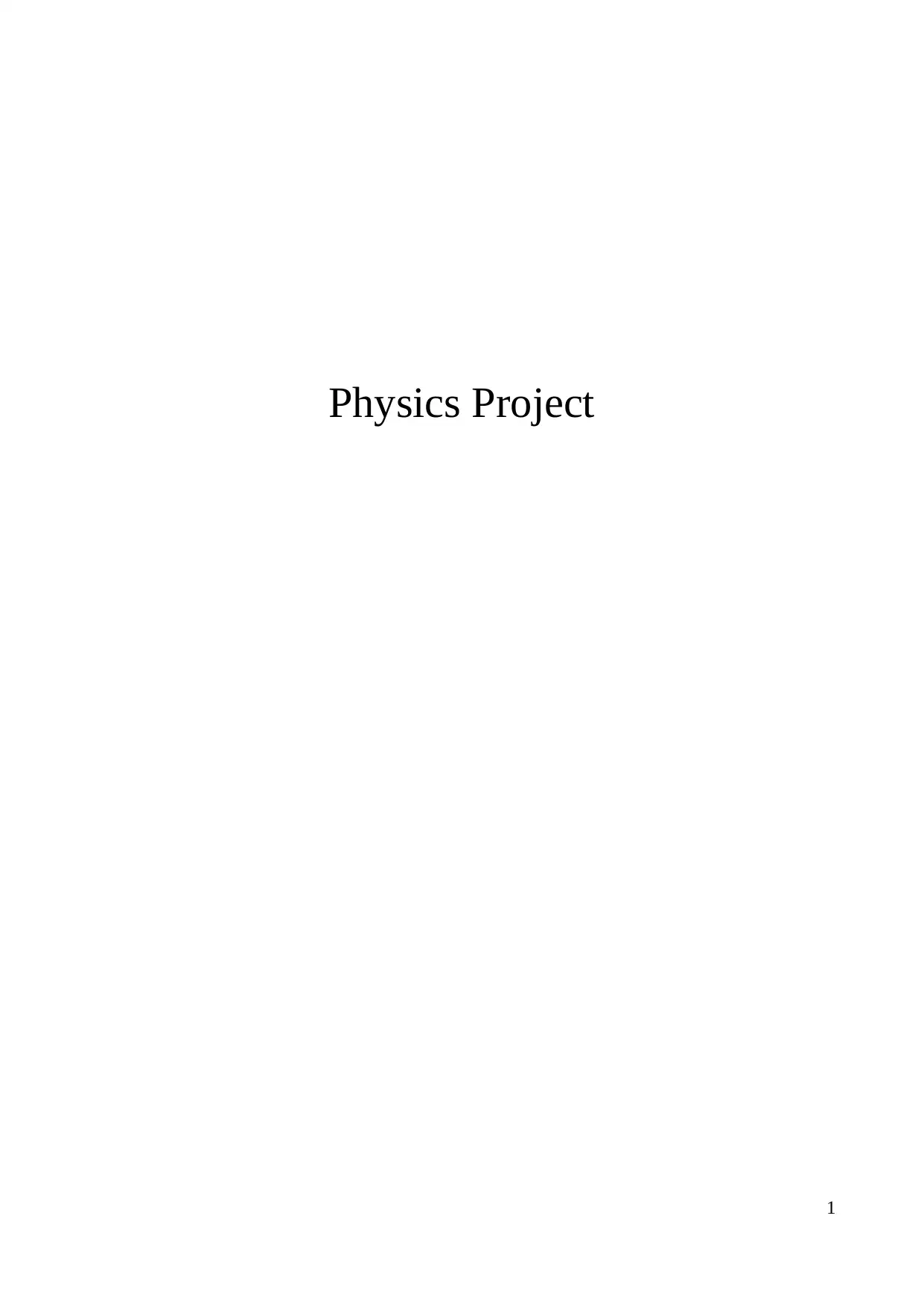
Physics Project
1
1
Secure Best Marks with AI Grader
Need help grading? Try our AI Grader for instant feedback on your assignments.
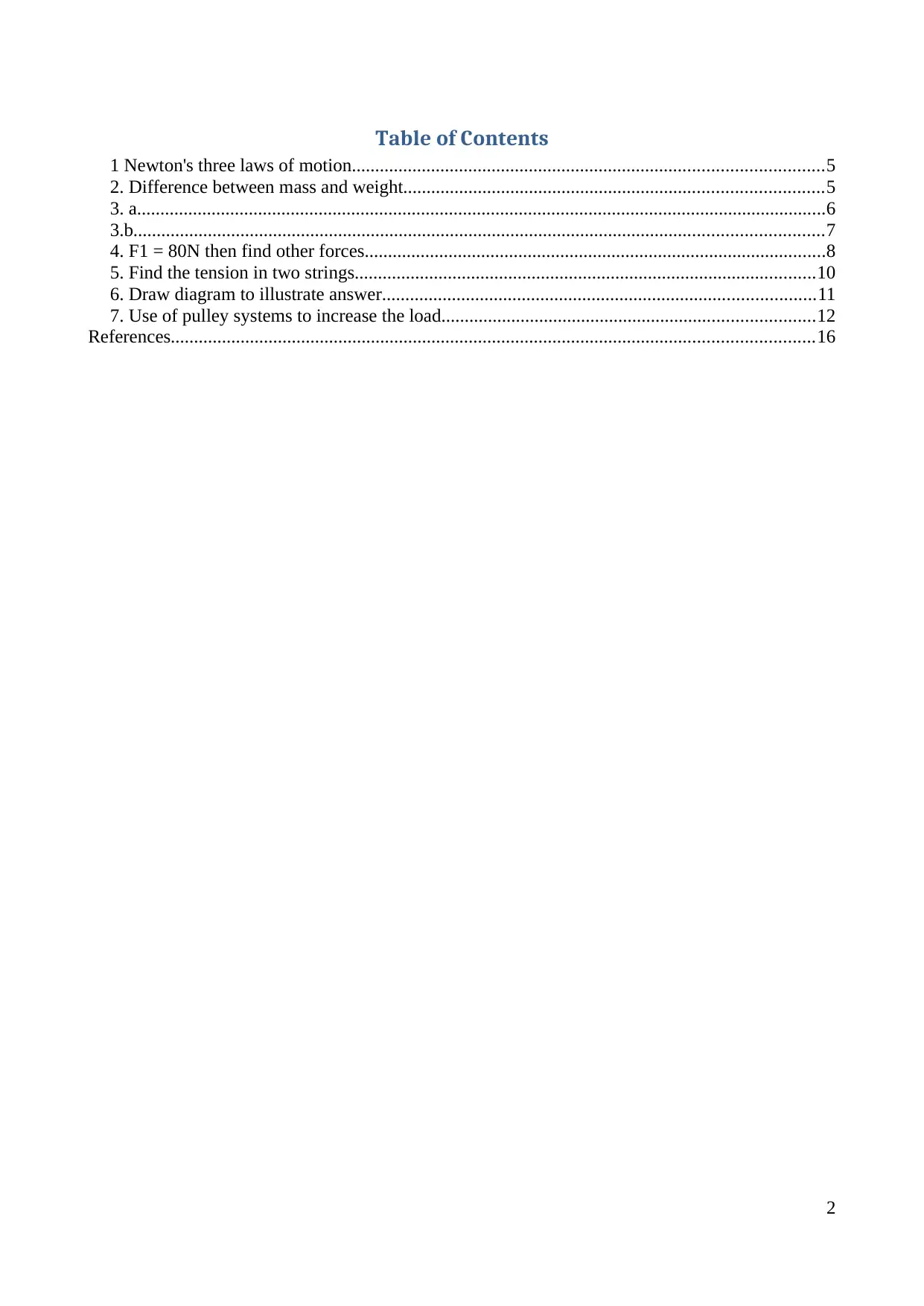
Table of Contents
1 Newton's three laws of motion.....................................................................................................5
2. Difference between mass and weight..........................................................................................5
3. a....................................................................................................................................................6
3.b....................................................................................................................................................7
4. F1 = 80N then find other forces...................................................................................................8
5. Find the tension in two strings...................................................................................................10
6. Draw diagram to illustrate answer.............................................................................................11
7. Use of pulley systems to increase the load................................................................................12
References..........................................................................................................................................16
2
1 Newton's three laws of motion.....................................................................................................5
2. Difference between mass and weight..........................................................................................5
3. a....................................................................................................................................................6
3.b....................................................................................................................................................7
4. F1 = 80N then find other forces...................................................................................................8
5. Find the tension in two strings...................................................................................................10
6. Draw diagram to illustrate answer.............................................................................................11
7. Use of pulley systems to increase the load................................................................................12
References..........................................................................................................................................16
2
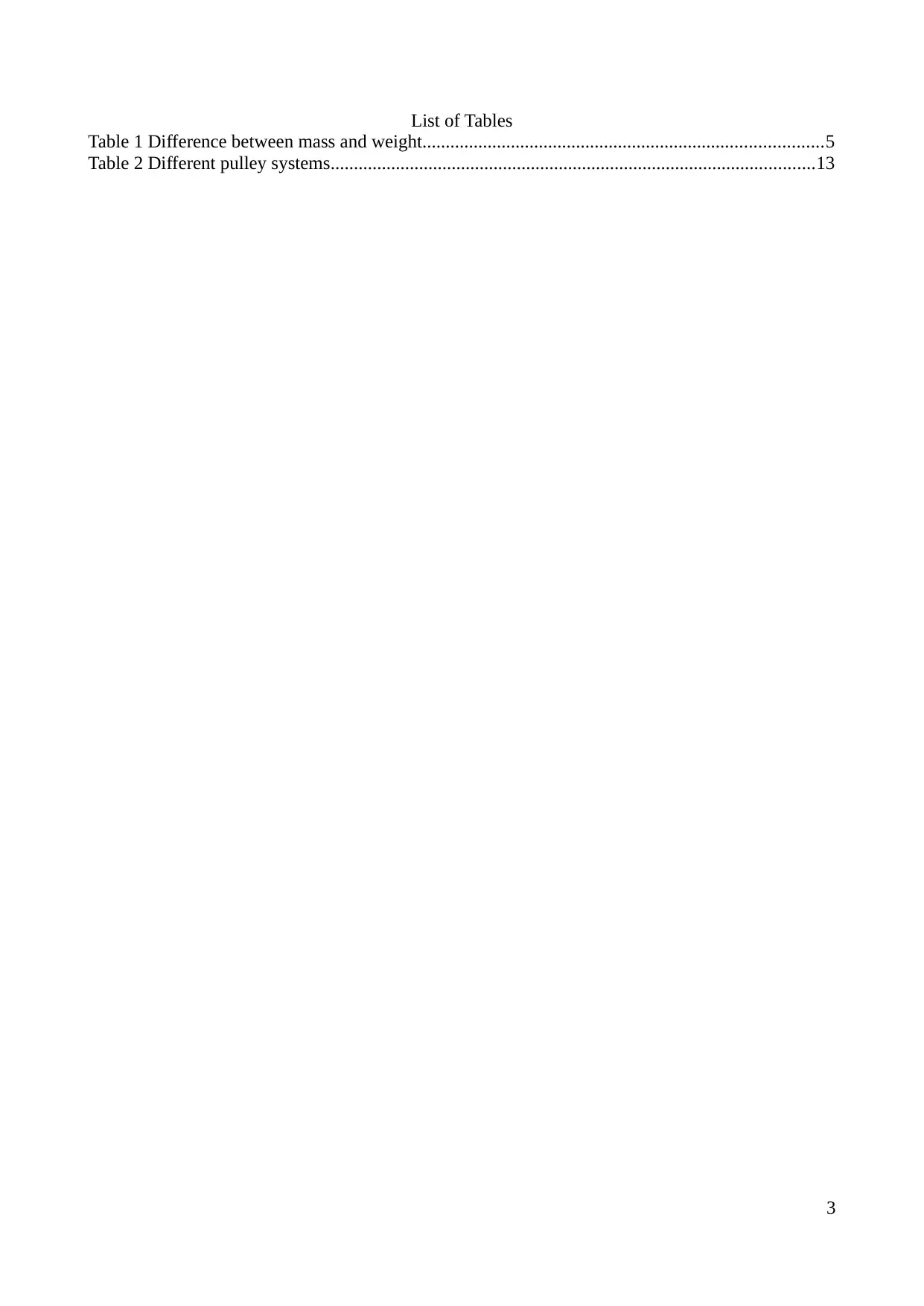
List of Tables
Table 1 Difference between mass and weight......................................................................................5
Table 2 Different pulley systems........................................................................................................13
3
Table 1 Difference between mass and weight......................................................................................5
Table 2 Different pulley systems........................................................................................................13
3
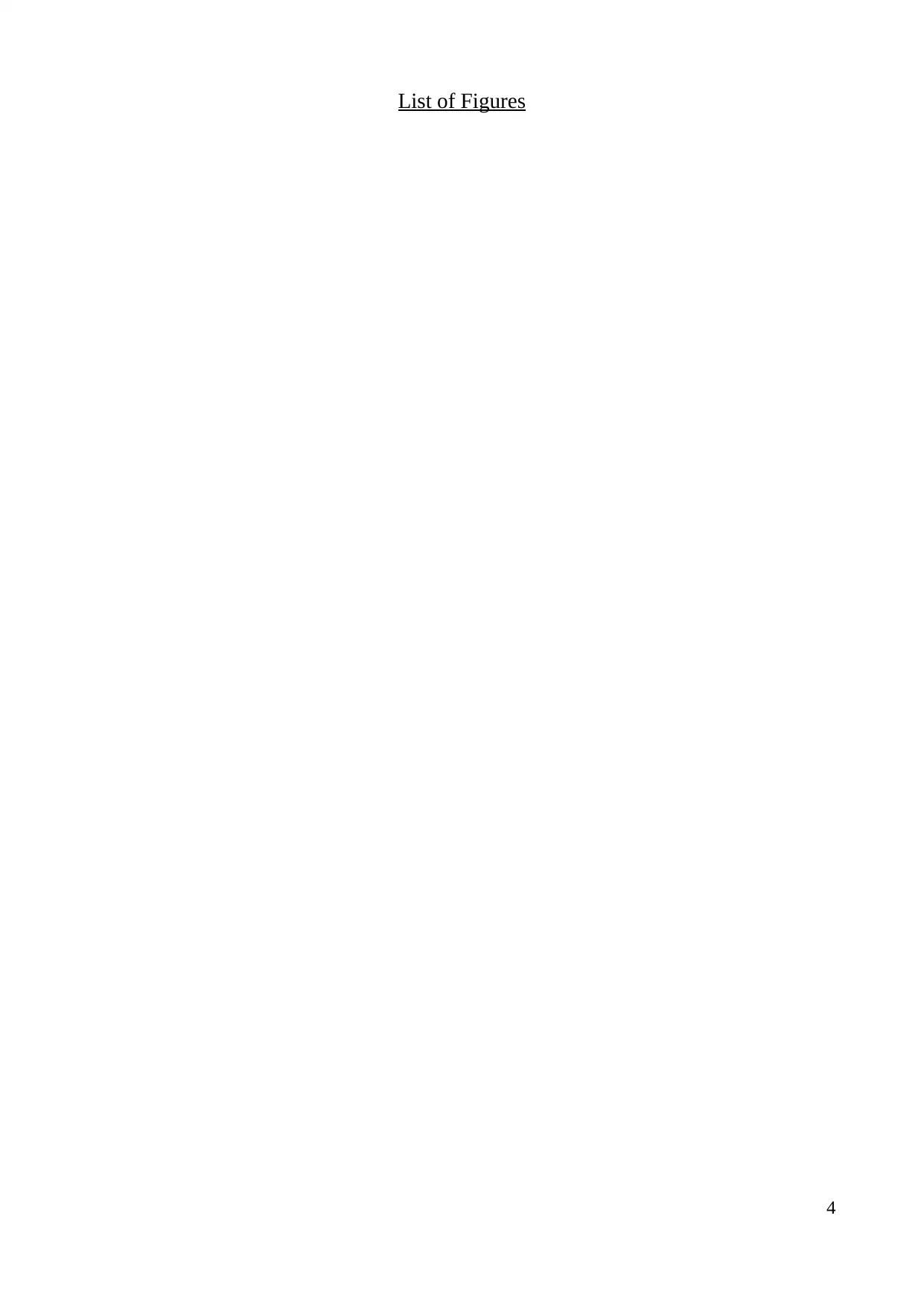
List of Figures
4
4
Secure Best Marks with AI Grader
Need help grading? Try our AI Grader for instant feedback on your assignments.
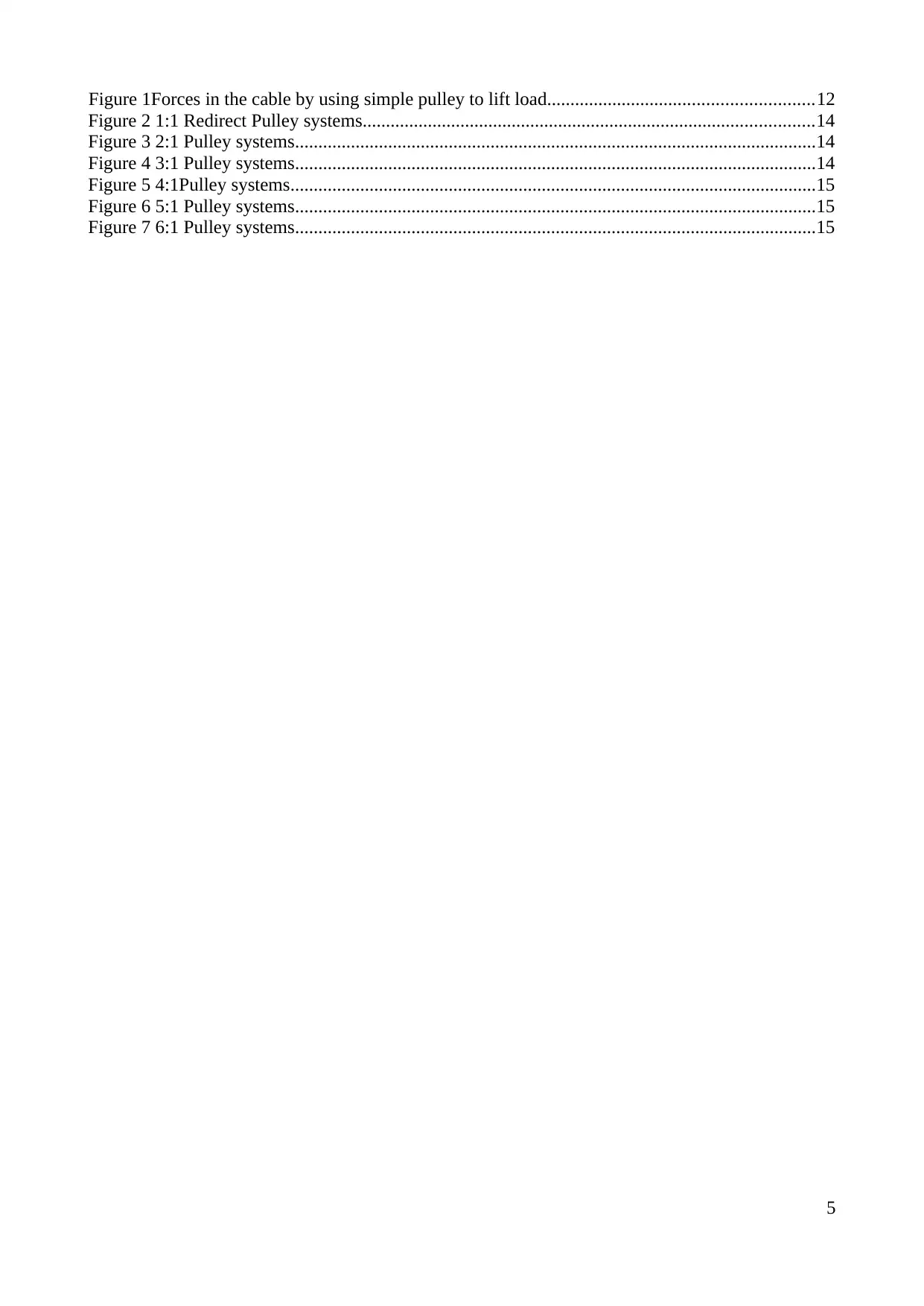
Figure 1Forces in the cable by using simple pulley to lift load.........................................................12
Figure 2 1:1 Redirect Pulley systems.................................................................................................14
Figure 3 2:1 Pulley systems................................................................................................................14
Figure 4 3:1 Pulley systems................................................................................................................14
Figure 5 4:1Pulley systems.................................................................................................................15
Figure 6 5:1 Pulley systems................................................................................................................15
Figure 7 6:1 Pulley systems................................................................................................................15
5
Figure 2 1:1 Redirect Pulley systems.................................................................................................14
Figure 3 2:1 Pulley systems................................................................................................................14
Figure 4 3:1 Pulley systems................................................................................................................14
Figure 5 4:1Pulley systems.................................................................................................................15
Figure 6 5:1 Pulley systems................................................................................................................15
Figure 7 6:1 Pulley systems................................................................................................................15
5
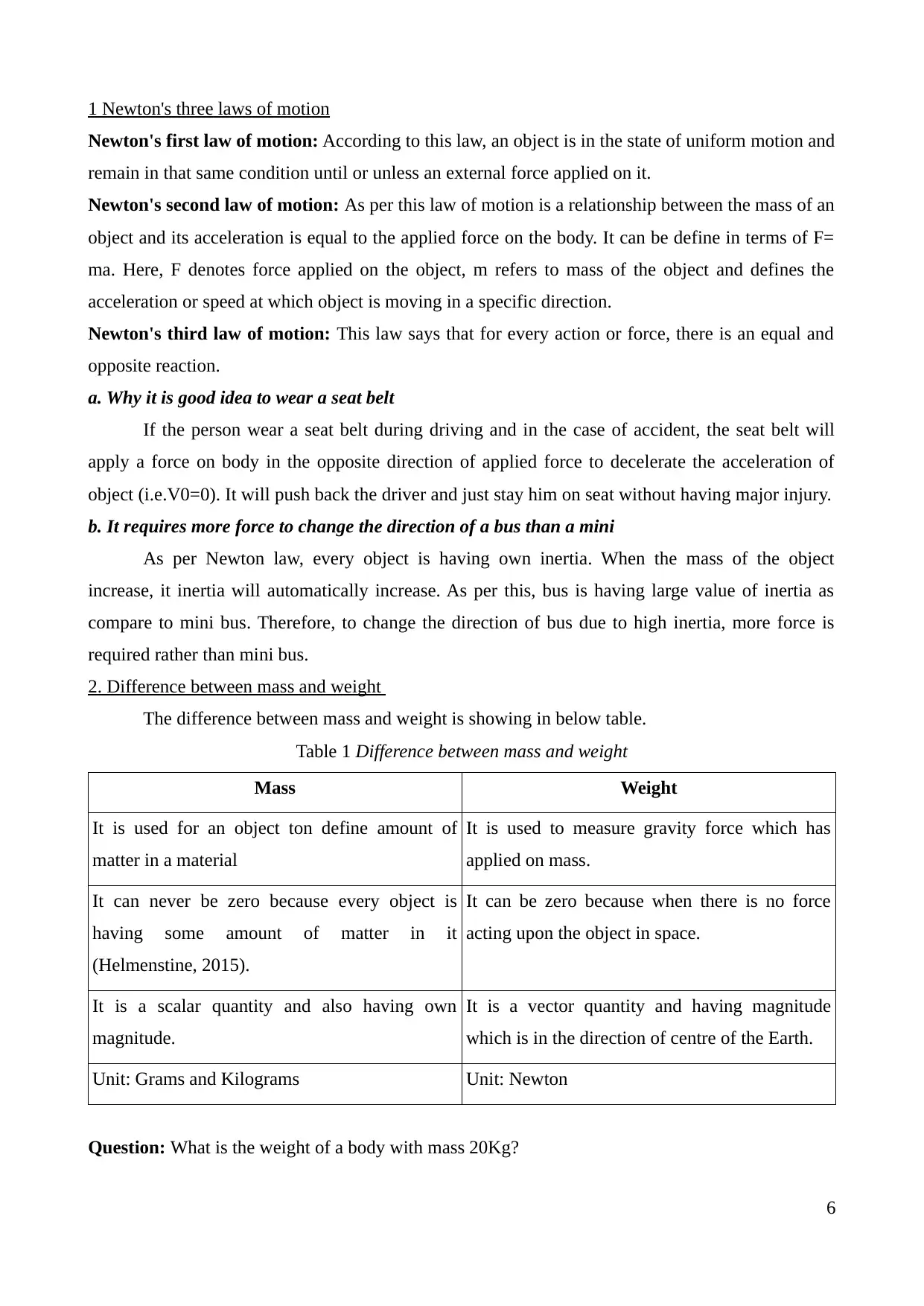
1 Newton's three laws of motion
Newton's first law of motion: According to this law, an object is in the state of uniform motion and
remain in that same condition until or unless an external force applied on it.
Newton's second law of motion: As per this law of motion is a relationship between the mass of an
object and its acceleration is equal to the applied force on the body. It can be define in terms of F=
ma. Here, F denotes force applied on the object, m refers to mass of the object and defines the
acceleration or speed at which object is moving in a specific direction.
Newton's third law of motion: This law says that for every action or force, there is an equal and
opposite reaction.
a. Why it is good idea to wear a seat belt
If the person wear a seat belt during driving and in the case of accident, the seat belt will
apply a force on body in the opposite direction of applied force to decelerate the acceleration of
object (i.e.V0=0). It will push back the driver and just stay him on seat without having major injury.
b. It requires more force to change the direction of a bus than a mini
As per Newton law, every object is having own inertia. When the mass of the object
increase, it inertia will automatically increase. As per this, bus is having large value of inertia as
compare to mini bus. Therefore, to change the direction of bus due to high inertia, more force is
required rather than mini bus.
2. Difference between mass and weight
The difference between mass and weight is showing in below table.
Table 1 Difference between mass and weight
Mass Weight
It is used for an object ton define amount of
matter in a material
It is used to measure gravity force which has
applied on mass.
It can never be zero because every object is
having some amount of matter in it
(Helmenstine, 2015).
It can be zero because when there is no force
acting upon the object in space.
It is a scalar quantity and also having own
magnitude.
It is a vector quantity and having magnitude
which is in the direction of centre of the Earth.
Unit: Grams and Kilograms Unit: Newton
Question: What is the weight of a body with mass 20Kg?
6
Newton's first law of motion: According to this law, an object is in the state of uniform motion and
remain in that same condition until or unless an external force applied on it.
Newton's second law of motion: As per this law of motion is a relationship between the mass of an
object and its acceleration is equal to the applied force on the body. It can be define in terms of F=
ma. Here, F denotes force applied on the object, m refers to mass of the object and defines the
acceleration or speed at which object is moving in a specific direction.
Newton's third law of motion: This law says that for every action or force, there is an equal and
opposite reaction.
a. Why it is good idea to wear a seat belt
If the person wear a seat belt during driving and in the case of accident, the seat belt will
apply a force on body in the opposite direction of applied force to decelerate the acceleration of
object (i.e.V0=0). It will push back the driver and just stay him on seat without having major injury.
b. It requires more force to change the direction of a bus than a mini
As per Newton law, every object is having own inertia. When the mass of the object
increase, it inertia will automatically increase. As per this, bus is having large value of inertia as
compare to mini bus. Therefore, to change the direction of bus due to high inertia, more force is
required rather than mini bus.
2. Difference between mass and weight
The difference between mass and weight is showing in below table.
Table 1 Difference between mass and weight
Mass Weight
It is used for an object ton define amount of
matter in a material
It is used to measure gravity force which has
applied on mass.
It can never be zero because every object is
having some amount of matter in it
(Helmenstine, 2015).
It can be zero because when there is no force
acting upon the object in space.
It is a scalar quantity and also having own
magnitude.
It is a vector quantity and having magnitude
which is in the direction of centre of the Earth.
Unit: Grams and Kilograms Unit: Newton
Question: What is the weight of a body with mass 20Kg?
6
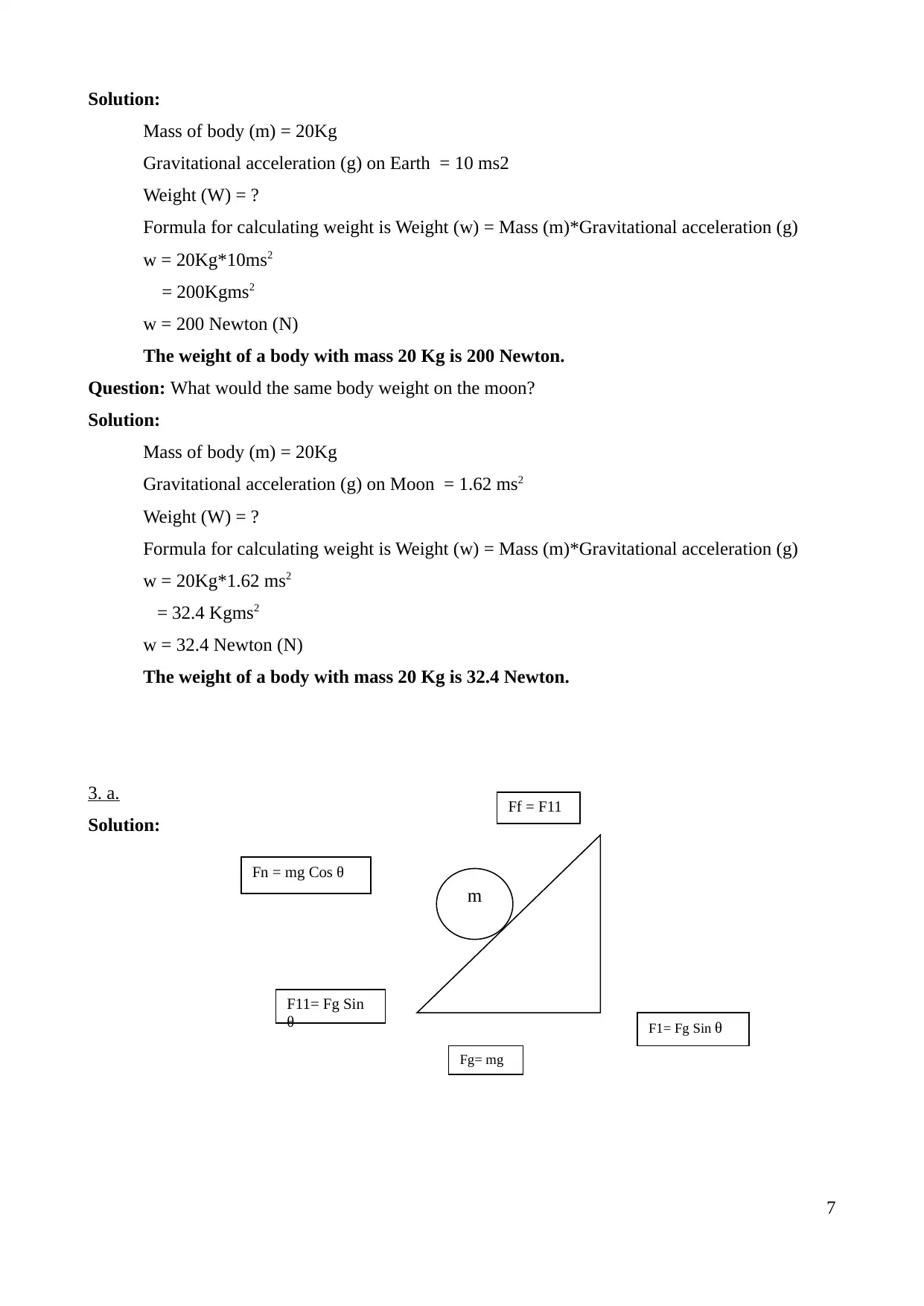
Solution:
Mass of body (m) = 20Kg
Gravitational acceleration (g) on Earth = 10 ms2
Weight (W) = ?
Formula for calculating weight is Weight (w) = Mass (m)*Gravitational acceleration (g)
w = 20Kg*10ms2
= 200Kgms2
w = 200 Newton (N)
The weight of a body with mass 20 Kg is 200 Newton.
Question: What would the same body weight on the moon?
Solution:
Mass of body (m) = 20Kg
Gravitational acceleration (g) on Moon = 1.62 ms2
Weight (W) = ?
Formula for calculating weight is Weight (w) = Mass (m)*Gravitational acceleration (g)
w = 20Kg*1.62 ms2
= 32.4 Kgms2
w = 32.4 Newton (N)
The weight of a body with mass 20 Kg is 32.4 Newton.
3. a.
Solution:
7
m
Fn = mg Cos θ
F11= Fg Sin
θ F1= Fg Sin θ
Ff = F11
Fg= mg
Mass of body (m) = 20Kg
Gravitational acceleration (g) on Earth = 10 ms2
Weight (W) = ?
Formula for calculating weight is Weight (w) = Mass (m)*Gravitational acceleration (g)
w = 20Kg*10ms2
= 200Kgms2
w = 200 Newton (N)
The weight of a body with mass 20 Kg is 200 Newton.
Question: What would the same body weight on the moon?
Solution:
Mass of body (m) = 20Kg
Gravitational acceleration (g) on Moon = 1.62 ms2
Weight (W) = ?
Formula for calculating weight is Weight (w) = Mass (m)*Gravitational acceleration (g)
w = 20Kg*1.62 ms2
= 32.4 Kgms2
w = 32.4 Newton (N)
The weight of a body with mass 20 Kg is 32.4 Newton.
3. a.
Solution:
7
m
Fn = mg Cos θ
F11= Fg Sin
θ F1= Fg Sin θ
Ff = F11
Fg= mg
Paraphrase This Document
Need a fresh take? Get an instant paraphrase of this document with our AI Paraphraser
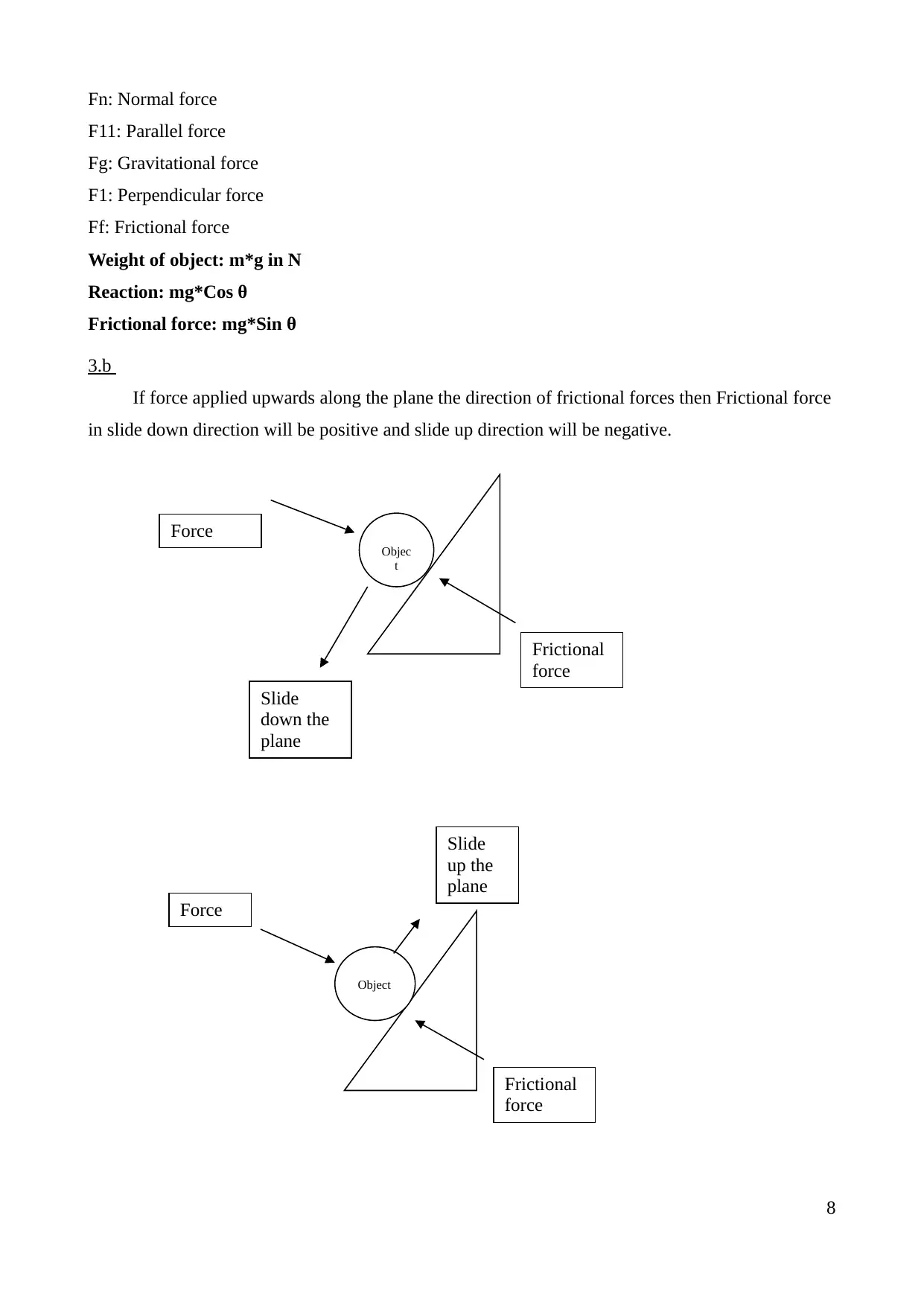
Fn: Normal force
F11: Parallel force
Fg: Gravitational force
F1: Perpendicular force
Ff: Frictional force
Weight of object: m*g in N
Reaction: mg*Cos θ
Frictional force: mg*Sin θ
3.b
If force applied upwards along the plane the direction of frictional forces then Frictional force
in slide down direction will be positive and slide up direction will be negative.
8
Objec
t
Force
Frictional
force
Slide
down the
plane
Object
Force
Slide
up the
plane
Frictional
force
F11: Parallel force
Fg: Gravitational force
F1: Perpendicular force
Ff: Frictional force
Weight of object: m*g in N
Reaction: mg*Cos θ
Frictional force: mg*Sin θ
3.b
If force applied upwards along the plane the direction of frictional forces then Frictional force
in slide down direction will be positive and slide up direction will be negative.
8
Objec
t
Force
Frictional
force
Slide
down the
plane
Object
Force
Slide
up the
plane
Frictional
force
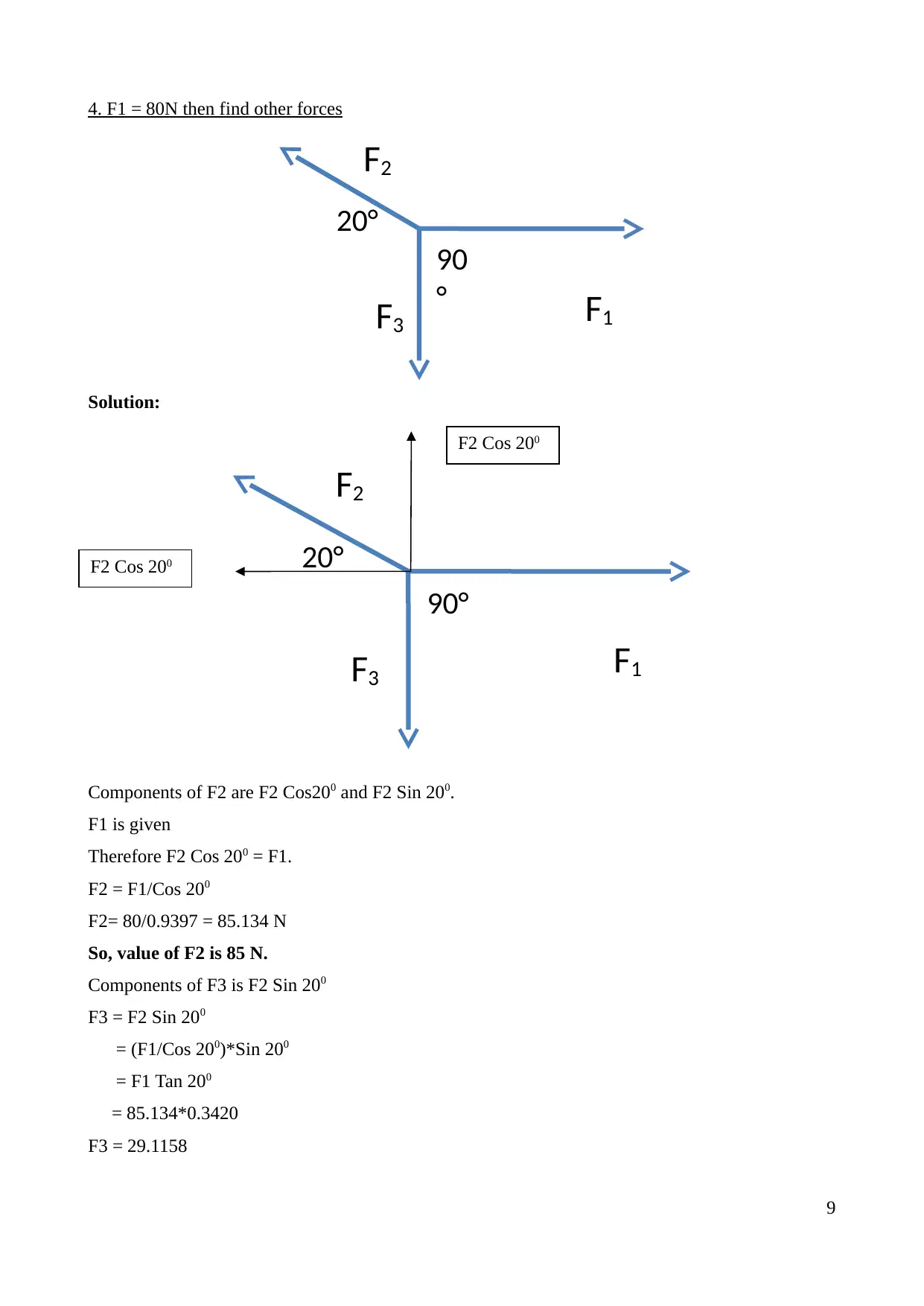
4. F1 = 80N then find other forces
Solution:
Components of F2 are F2 Cos200 and F2 Sin 200.
F1 is given
Therefore F2 Cos 200 = F1.
F2 = F1/Cos 200
F2= 80/0.9397 = 85.134 N
So, value of F2 is 85 N.
Components of F3 is F2 Sin 200
F3 = F2 Sin 200
= (F1/Cos 200)*Sin 200
= F1 Tan 200
= 85.134*0.3420
F3 = 29.1158
9
20°
90
° F1
F2
F3
20°
90°
F1
F2
F3
F2 Cos 200
F2 Cos 200
Solution:
Components of F2 are F2 Cos200 and F2 Sin 200.
F1 is given
Therefore F2 Cos 200 = F1.
F2 = F1/Cos 200
F2= 80/0.9397 = 85.134 N
So, value of F2 is 85 N.
Components of F3 is F2 Sin 200
F3 = F2 Sin 200
= (F1/Cos 200)*Sin 200
= F1 Tan 200
= 85.134*0.3420
F3 = 29.1158
9
20°
90
° F1
F2
F3
20°
90°
F1
F2
F3
F2 Cos 200
F2 Cos 200
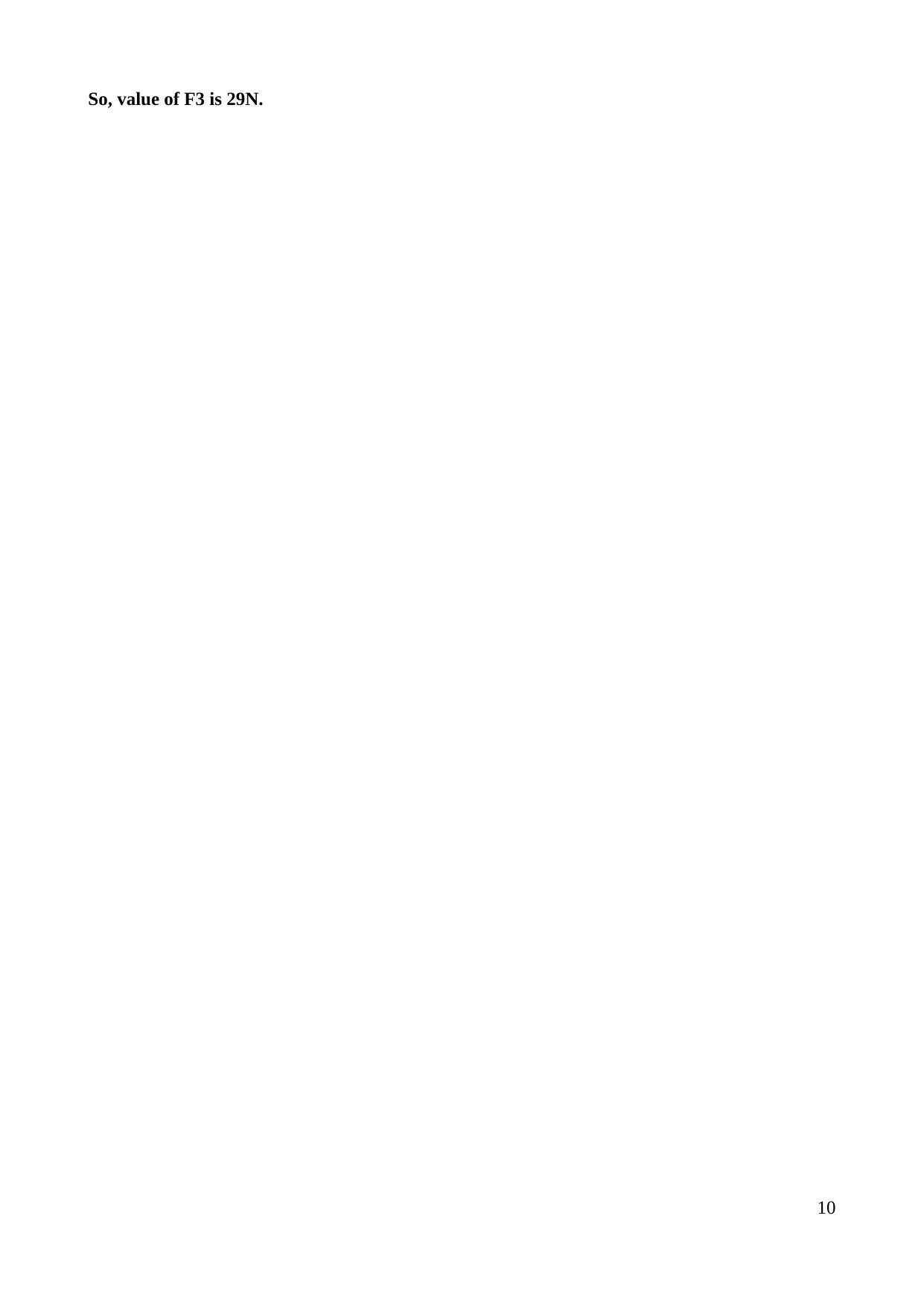
So, value of F3 is 29N.
10
10
Secure Best Marks with AI Grader
Need help grading? Try our AI Grader for instant feedback on your assignments.
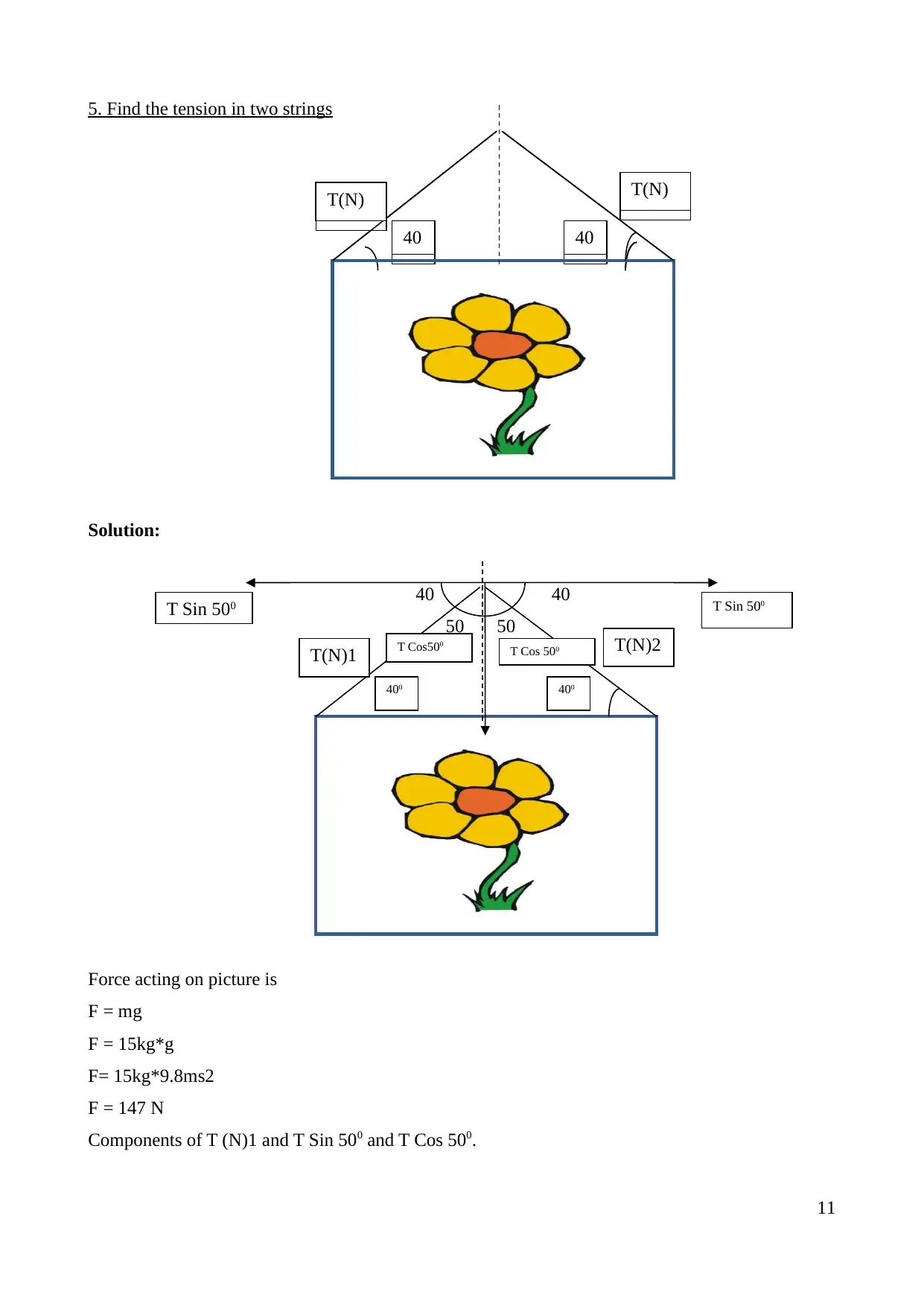
5. Find the tension in two strings
Solution:
40 40
50 50
Force acting on picture is
F = mg
F = 15kg*g
F= 15kg*9.8ms2
F = 147 N
Components of T (N)1 and T Sin 500 and T Cos 500.
11
T(N) T(N)
40 40
T(N) T(N)
40 40
T(N) T(N)
40 40
T(N) T(N)
40 40
T(N)1 T(N)2
400 400
T Sin 500 T Sin 500
T Cos500
T Cos 500
Solution:
40 40
50 50
Force acting on picture is
F = mg
F = 15kg*g
F= 15kg*9.8ms2
F = 147 N
Components of T (N)1 and T Sin 500 and T Cos 500.
11
T(N) T(N)
40 40
T(N) T(N)
40 40
T(N) T(N)
40 40
T(N) T(N)
40 40
T(N)1 T(N)2
400 400
T Sin 500 T Sin 500
T Cos500
T Cos 500
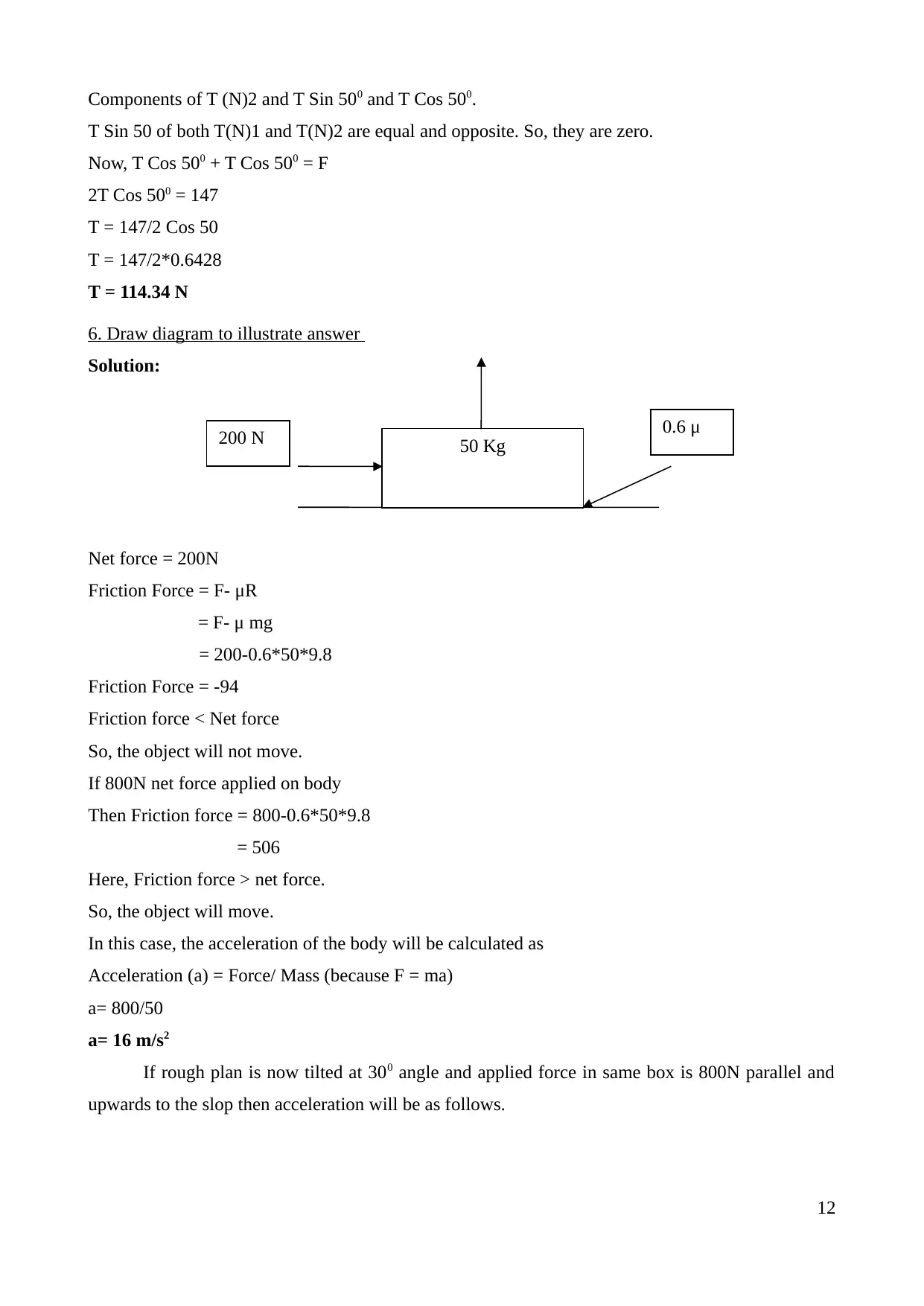
Components of T (N)2 and T Sin 500 and T Cos 500.
T Sin 50 of both T(N)1 and T(N)2 are equal and opposite. So, they are zero.
Now, T Cos 500 + T Cos 500 = F
2T Cos 500 = 147
T = 147/2 Cos 50
T = 147/2*0.6428
T = 114.34 N
6. Draw diagram to illustrate answer
Solution:
Net force = 200N
Friction Force = F- μR
= F- μ mg
= 200-0.6*50*9.8
Friction Force = -94
Friction force < Net force
So, the object will not move.
If 800N net force applied on body
Then Friction force = 800-0.6*50*9.8
= 506
Here, Friction force > net force.
So, the object will move.
In this case, the acceleration of the body will be calculated as
Acceleration (a) = Force/ Mass (because F = ma)
a= 800/50
a= 16 m/s2
If rough plan is now tilted at 300 angle and applied force in same box is 800N parallel and
upwards to the slop then acceleration will be as follows.
12
50 Kg200 N 0.6 μ
T Sin 50 of both T(N)1 and T(N)2 are equal and opposite. So, they are zero.
Now, T Cos 500 + T Cos 500 = F
2T Cos 500 = 147
T = 147/2 Cos 50
T = 147/2*0.6428
T = 114.34 N
6. Draw diagram to illustrate answer
Solution:
Net force = 200N
Friction Force = F- μR
= F- μ mg
= 200-0.6*50*9.8
Friction Force = -94
Friction force < Net force
So, the object will not move.
If 800N net force applied on body
Then Friction force = 800-0.6*50*9.8
= 506
Here, Friction force > net force.
So, the object will move.
In this case, the acceleration of the body will be calculated as
Acceleration (a) = Force/ Mass (because F = ma)
a= 800/50
a= 16 m/s2
If rough plan is now tilted at 300 angle and applied force in same box is 800N parallel and
upwards to the slop then acceleration will be as follows.
12
50 Kg200 N 0.6 μ
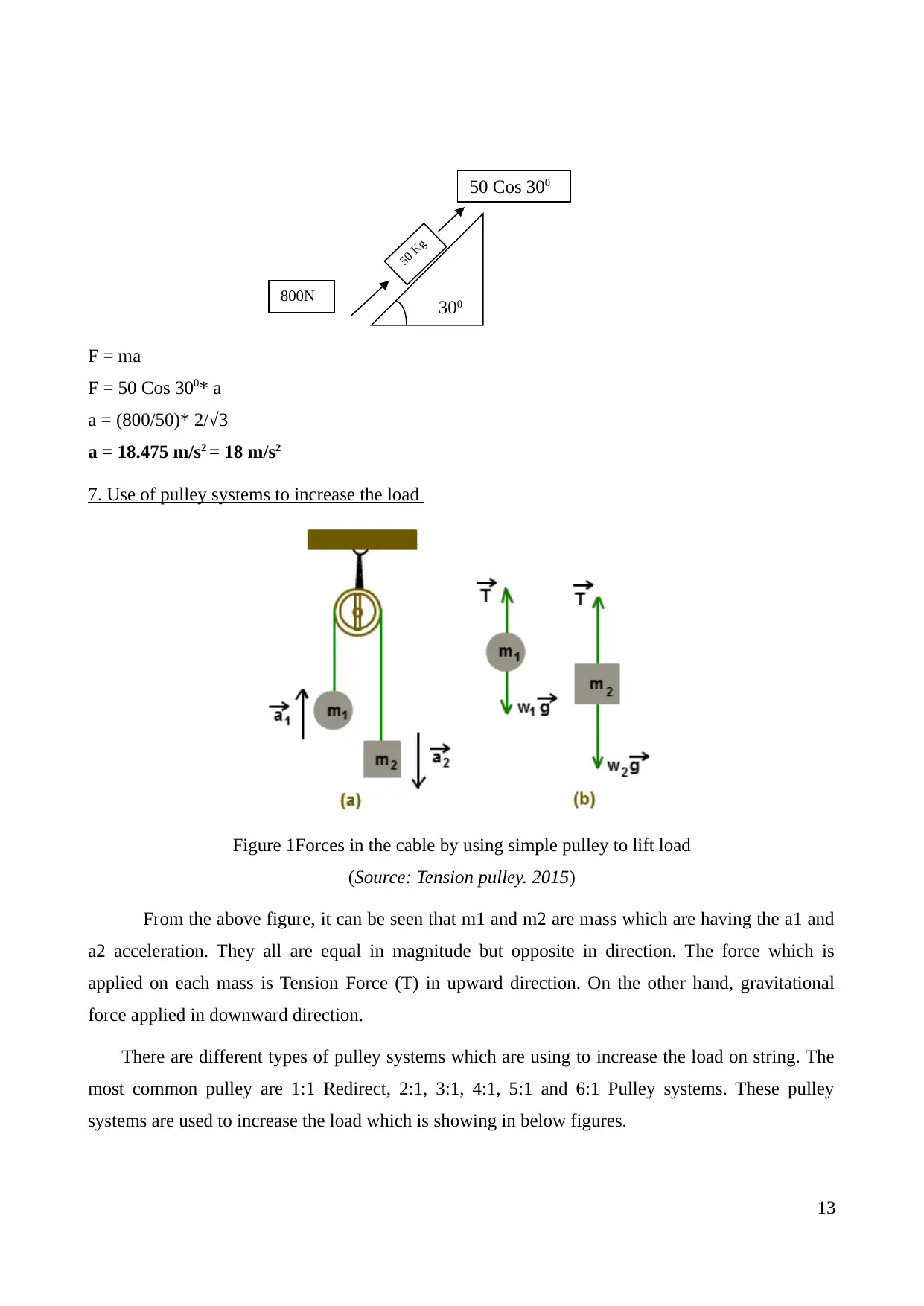
F = ma
F = 50 Cos 300* a
a = (800/50)* 2/√3
a = 18.475 m/s2 = 18 m/s2
7. Use of pulley systems to increase the load
Figure 1Forces in the cable by using simple pulley to lift load
(Source: Tension pulley. 2015)
From the above figure, it can be seen that m1 and m2 are mass which are having the a1 and
a2 acceleration. They all are equal in magnitude but opposite in direction. The force which is
applied on each mass is Tension Force (T) in upward direction. On the other hand, gravitational
force applied in downward direction.
There are different types of pulley systems which are using to increase the load on string. The
most common pulley are 1:1 Redirect, 2:1, 3:1, 4:1, 5:1 and 6:1 Pulley systems. These pulley
systems are used to increase the load which is showing in below figures.
13
300
50 Kg
50 Cos 300
800N
NN
F = 50 Cos 300* a
a = (800/50)* 2/√3
a = 18.475 m/s2 = 18 m/s2
7. Use of pulley systems to increase the load
Figure 1Forces in the cable by using simple pulley to lift load
(Source: Tension pulley. 2015)
From the above figure, it can be seen that m1 and m2 are mass which are having the a1 and
a2 acceleration. They all are equal in magnitude but opposite in direction. The force which is
applied on each mass is Tension Force (T) in upward direction. On the other hand, gravitational
force applied in downward direction.
There are different types of pulley systems which are using to increase the load on string. The
most common pulley are 1:1 Redirect, 2:1, 3:1, 4:1, 5:1 and 6:1 Pulley systems. These pulley
systems are used to increase the load which is showing in below figures.
13
300
50 Kg
50 Cos 300
800N
NN
Paraphrase This Document
Need a fresh take? Get an instant paraphrase of this document with our AI Paraphraser
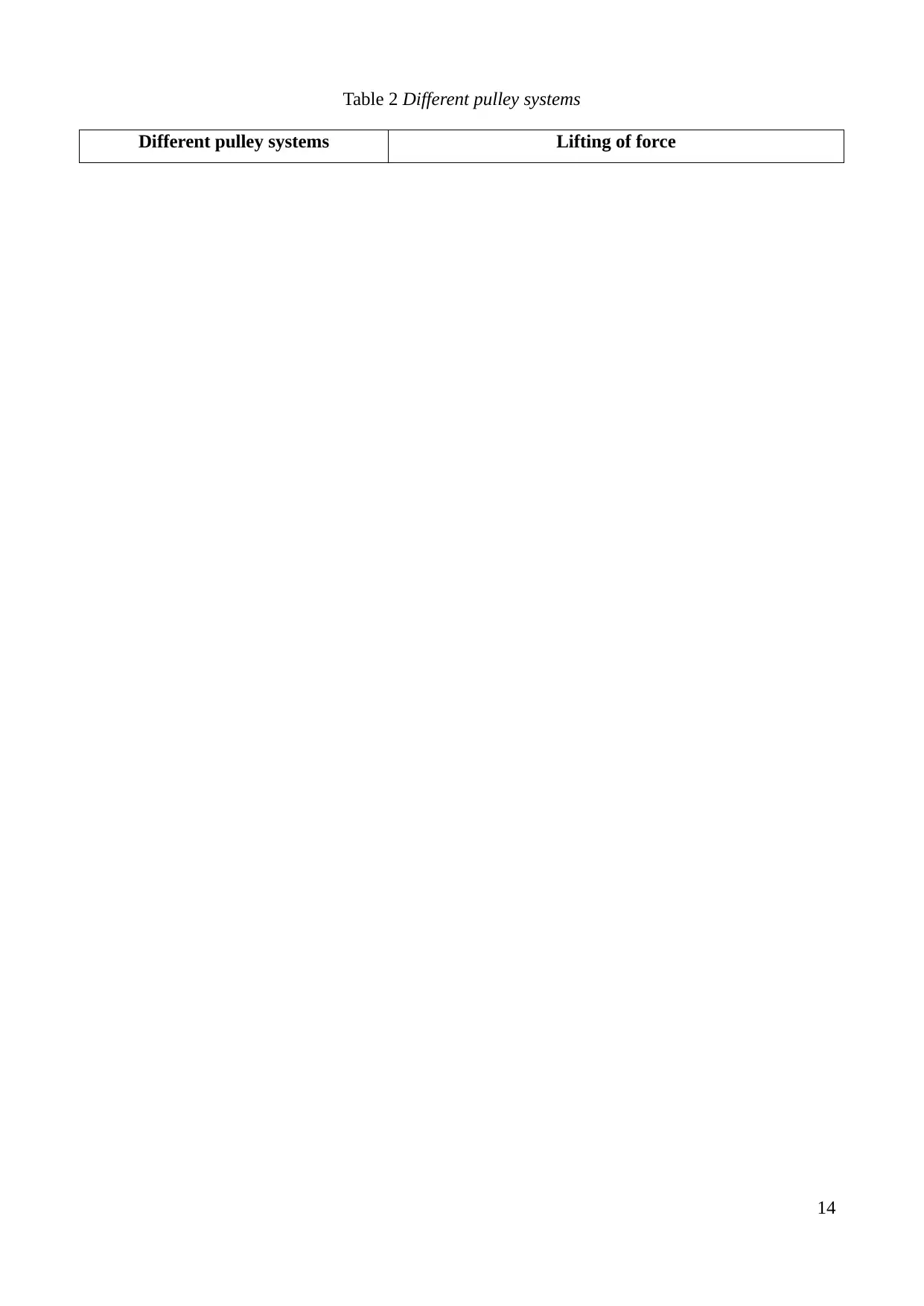
Table 2 Different pulley systems
Different pulley systems Lifting of force
14
Different pulley systems Lifting of force
14
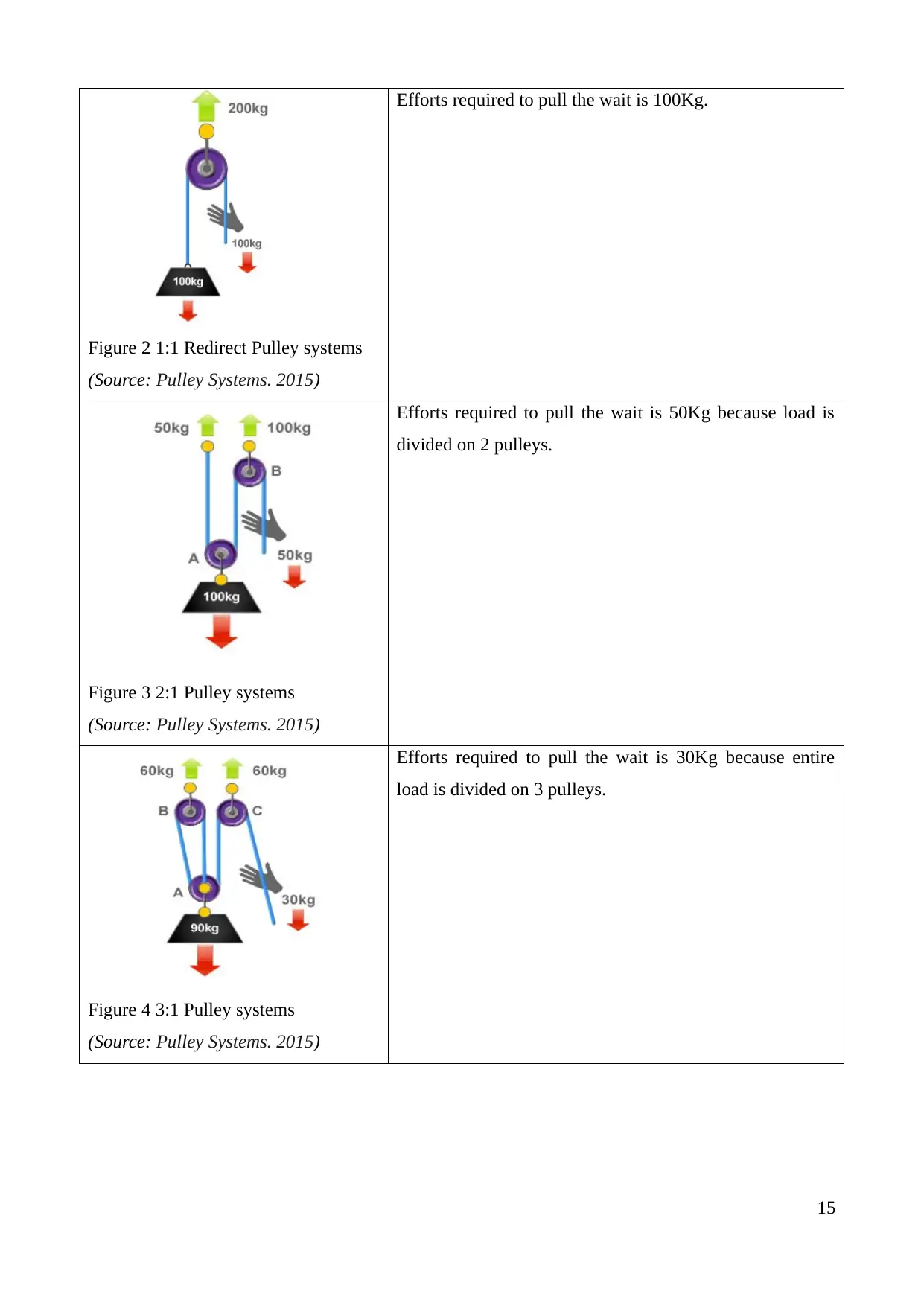
Figure 2 1:1 Redirect Pulley systems
(Source: Pulley Systems. 2015)
Efforts required to pull the wait is 100Kg.
Figure 3 2:1 Pulley systems
(Source: Pulley Systems. 2015)
Efforts required to pull the wait is 50Kg because load is
divided on 2 pulleys.
Figure 4 3:1 Pulley systems
(Source: Pulley Systems. 2015)
Efforts required to pull the wait is 30Kg because entire
load is divided on 3 pulleys.
15
(Source: Pulley Systems. 2015)
Efforts required to pull the wait is 100Kg.
Figure 3 2:1 Pulley systems
(Source: Pulley Systems. 2015)
Efforts required to pull the wait is 50Kg because load is
divided on 2 pulleys.
Figure 4 3:1 Pulley systems
(Source: Pulley Systems. 2015)
Efforts required to pull the wait is 30Kg because entire
load is divided on 3 pulleys.
15
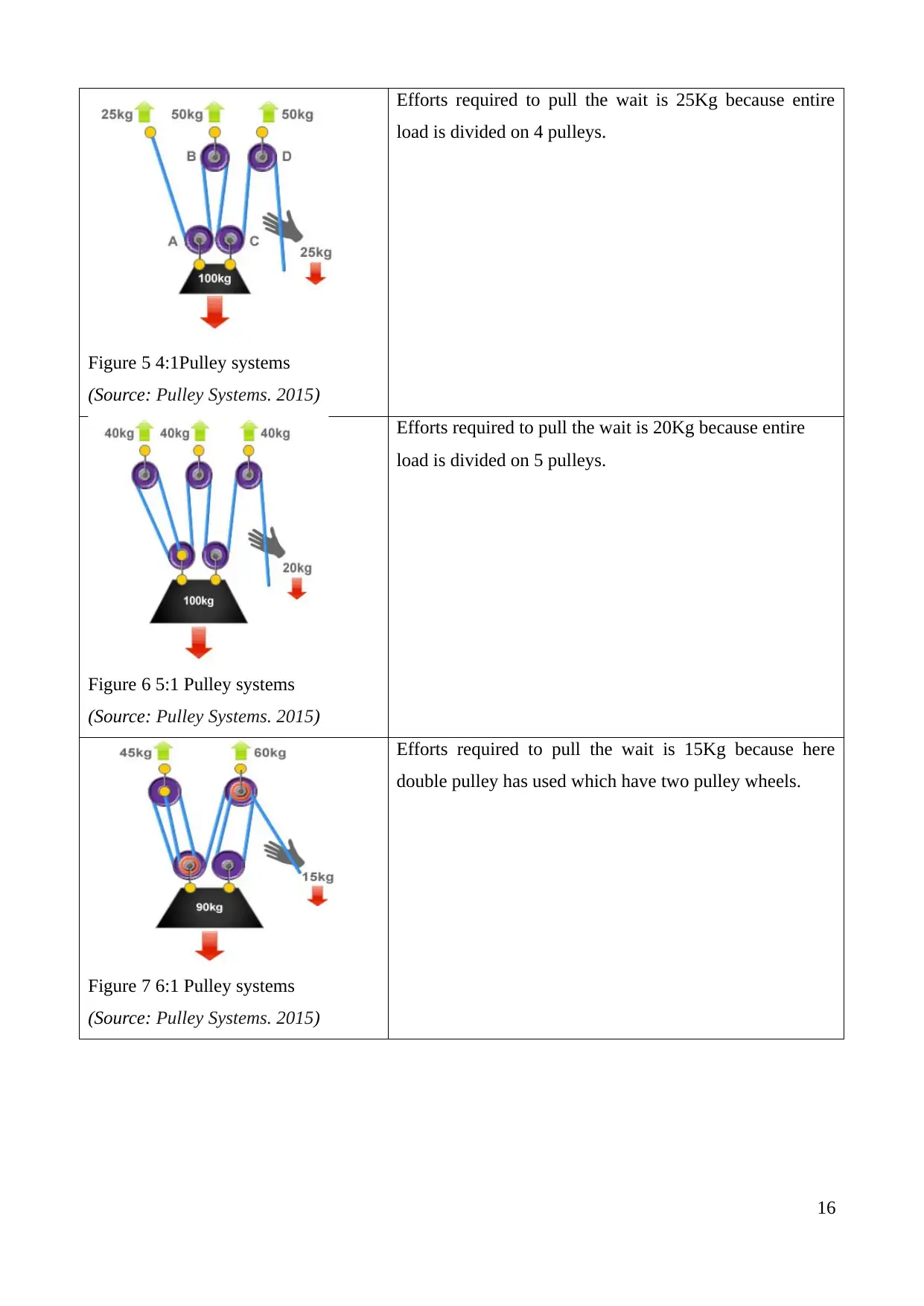
Figure 5 4:1Pulley systems
(Source: Pulley Systems. 2015)
Efforts required to pull the wait is 25Kg because entire
load is divided on 4 pulleys.
Figure 6 5:1 Pulley systems
(Source: Pulley Systems. 2015)
Efforts required to pull the wait is 20Kg because entire
load is divided on 5 pulleys.
Figure 7 6:1 Pulley systems
(Source: Pulley Systems. 2015)
Efforts required to pull the wait is 15Kg because here
double pulley has used which have two pulley wheels.
16
(Source: Pulley Systems. 2015)
Efforts required to pull the wait is 25Kg because entire
load is divided on 4 pulleys.
Figure 6 5:1 Pulley systems
(Source: Pulley Systems. 2015)
Efforts required to pull the wait is 20Kg because entire
load is divided on 5 pulleys.
Figure 7 6:1 Pulley systems
(Source: Pulley Systems. 2015)
Efforts required to pull the wait is 15Kg because here
double pulley has used which have two pulley wheels.
16
Secure Best Marks with AI Grader
Need help grading? Try our AI Grader for instant feedback on your assignments.
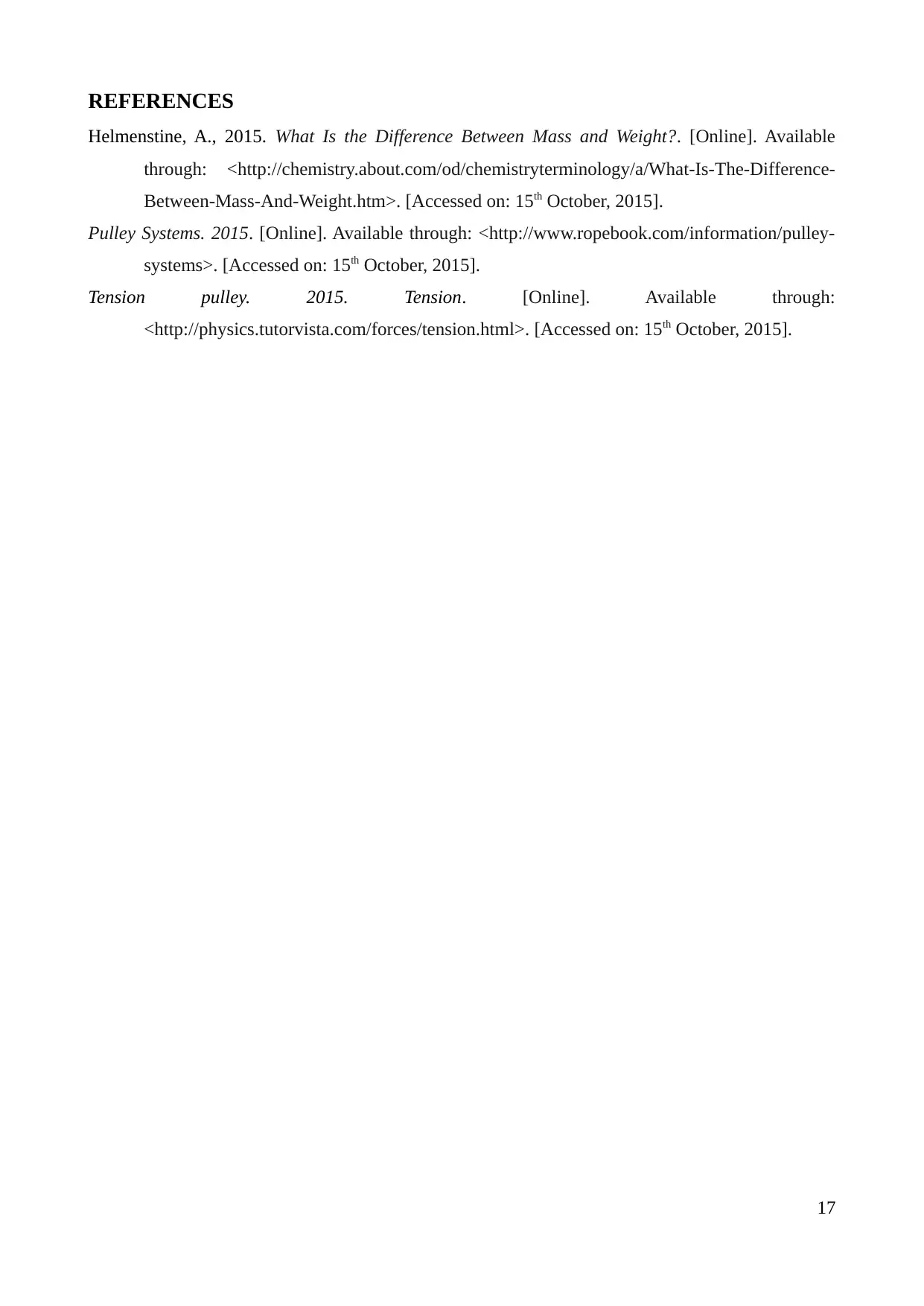
REFERENCES
Helmenstine, A., 2015. What Is the Difference Between Mass and Weight?. [Online]. Available
through: <http://chemistry.about.com/od/chemistryterminology/a/What-Is-The-Difference-
Between-Mass-And-Weight.htm>. [Accessed on: 15th October, 2015].
Pulley Systems. 2015. [Online]. Available through: <http://www.ropebook.com/information/pulley-
systems>. [Accessed on: 15th October, 2015].
Tension pulley. 2015. Tension. [Online]. Available through:
<http://physics.tutorvista.com/forces/tension.html>. [Accessed on: 15th October, 2015].
17
Helmenstine, A., 2015. What Is the Difference Between Mass and Weight?. [Online]. Available
through: <http://chemistry.about.com/od/chemistryterminology/a/What-Is-The-Difference-
Between-Mass-And-Weight.htm>. [Accessed on: 15th October, 2015].
Pulley Systems. 2015. [Online]. Available through: <http://www.ropebook.com/information/pulley-
systems>. [Accessed on: 15th October, 2015].
Tension pulley. 2015. Tension. [Online]. Available through:
<http://physics.tutorvista.com/forces/tension.html>. [Accessed on: 15th October, 2015].
17
1 out of 17
Related Documents
Your All-in-One AI-Powered Toolkit for Academic Success.
+13062052269
info@desklib.com
Available 24*7 on WhatsApp / Email
![[object Object]](/_next/static/media/star-bottom.7253800d.svg)
Unlock your academic potential
© 2024 | Zucol Services PVT LTD | All rights reserved.





